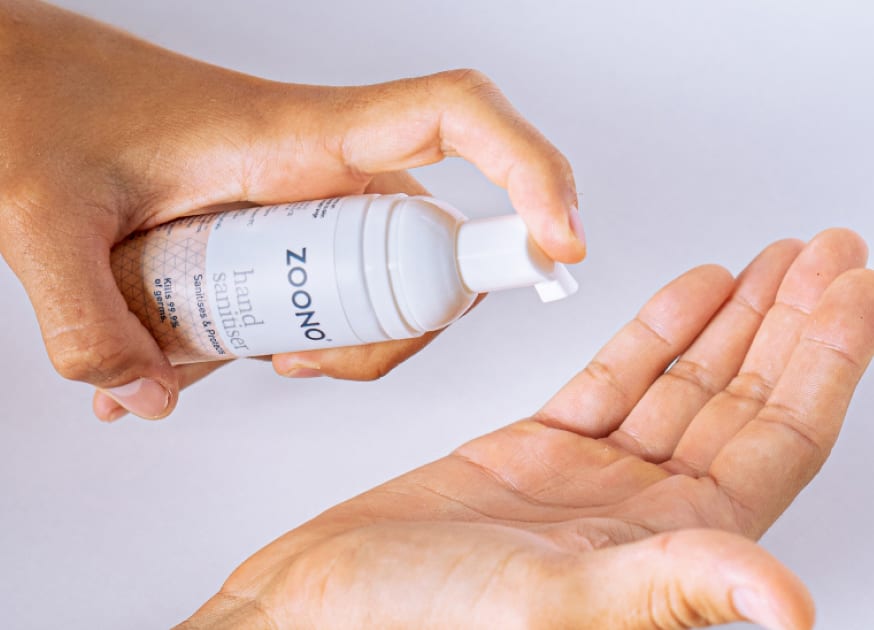A New Class of Germ Protection for Childcare Facilities
15/02/2021 | Nadene Erasmus
Research shows longer lasting protection against bacteria and pathogens is possible with the use of advanced antibacterial products in childcare and educational facilities.
Introducing new processes and hygiene solutions that keep childcare and early learning facilities protected from bacteria and pathogens has been a top priority for industry decision makers since the emergence of COVID-19 in early 2020.
Innovations in cleaning technology have advanced during this time and Australian childcare providers have embraced new methods to prevent the spread of germs to keep children – and professionals working in schools and nurseries – safe.
Childcare facilities are among the most at risk for the spread of germs, which is why best practice hygiene procedures are so vital. According to research (Danon et al., 2013 ), children are among the most at risk for both catching and transmitting infections to other people, particularly respiratory infections, due to their high levels of social contact.
The Australian Health Protection Principal Committee (AHPPC) has issued guidance on how to minimise the risk of transmitting infections, including COVID-19, in care facility settings. These include physical distancing, hand and respiratory hygiene, regular cleaning and disinfection of the environment.
Latest trials now also provide strong evidence that it is possible to reduce the spread of germs and provide longer-lasting protection against bacteria and pathogens between cleaning cycles through the use of advanced antibacterial products.
G8 Education: A trial of advanced antibacterial products in childcare facilities.
G8 Education, one of Australia’s largest private providers of quality early childhood education and care, conducted trials of ZOONO Z-71 Microbe Shield, an antibacterial surface sanitiser, across ten childcare facilities in Melbourne.
The study found that the product, which dries to form a protective antibacterial layer on surfaces, made a significant impact on the ‘ATP’ levels in care facility settings, even after 30 days. These levels measure the concentration of micro-organisms on surfaces and are an indicator of whether a surface is clean.
ZOONO was applied to different high traffic areas within each facility, such as taps, door handles and toilet flush handles, and swabs were taken of each surface at different time intervals: after 10 minutes, after 15 days, and 30 days after treatment. No changes were made to the facilities’ existing cleaning regimes or health and safety protocols.
The study revealed that the use of this advanced antibacterial product reduced the average ATP count across all treated surfaces in each facility by more than 96 percent after 10 minutes. Similarly, 15 days after the treatment, the average reduction in ATP was still more than 85 percent.
Even after 30 days, the average reduction in ATP readings from all trial areas remained at more than 85 percent.
This evidence shows that using advanced antimicrobial products that form a protective layer, such as ZOONO, has a significant impact on the spread of pathogens in care facilities and can help protect surfaces between cleaning cycles for up to 30 days.
Natalie Boehm, Head of Health and Safety at G8 Education, said: “The health and safety of families and team members remains our highest priority. We are always looking for new, innovative ways to support the health, safety and wellbeing of children, families and team members so were interested to work with ZOONO on this trial. The results have been hugely successful, and will no doubt give our families a higher level of reassurance while their children are in our care. We can see significant benefits in terms of reduced risk of absenteeism due to illness. Keeping our team members safe and healthy is important to ensure that we can continue to operate efficiently in these uncertain times.”
How does this next generation of germ protection work?
It is widely acknowledged that surfaces are a significant source of contamination and have become major factors in the battle against cross-infection. Bacteria, fungi and yeasts contaminate surfaces and can form biofilms resistant to traditional hygiene processes, such as cleaning and disinfection.
Harmful pathogens can be transferred via touch or even the air as tiny droplets. Bacteria can also be found in the soil and in water systems, especially E.coli and Pseudomonas, and the risk increases for anyone in the community with low levels of immunity.
Antibacterial sanitisers, such as ZOONO, work by forming an antibacterial layer, or ‘shield’, that bonds to skin and surfaces. This protective layer is made of tiny, microscopic ‘pins’ that attract germs and burst them like a balloon when they touch the surface.
“When applied to surfaces, either by spraying, wiping or ‘misting’, evidence shows that these antibacterial products can significantly reduce the level of harmful pathogens when used as part of an ongoing and regular cleaning routine.
ZOONO is currently used in over 1,000 childcare centres in New Zealand and Australia, including over 470 G8 Education centres. For further information about ZOONO, please visit www.zoono.com
References
References Danon et al., (2013) Social encounter networks: characterizing Great Britain | Proceedings of the Royal Society B: Biological Sciences (royalsocietypublishing.org)
LATEST NEWS








